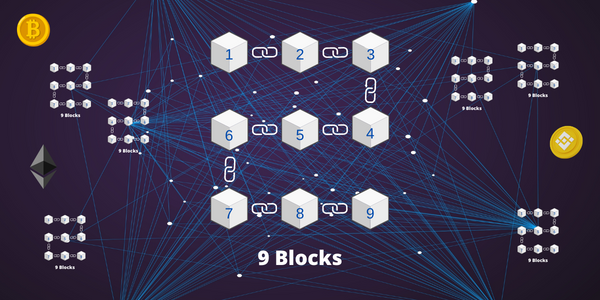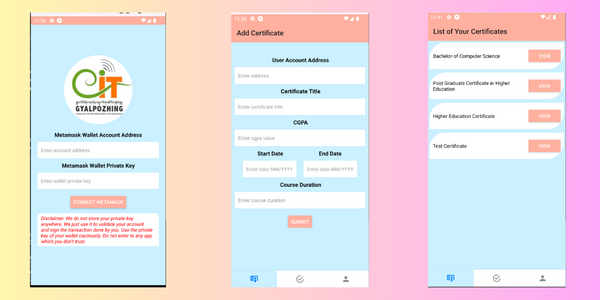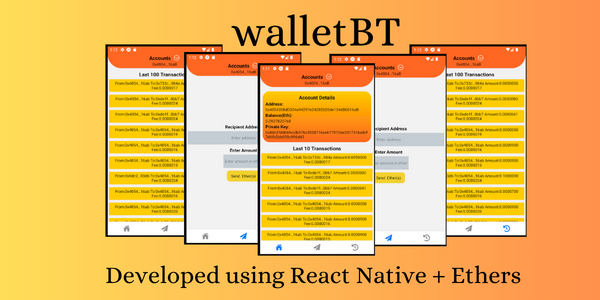Web3, also known as the “third generation of the World Wide Web,” is a revolutionary new way of interacting with the internet. Unlike the current web, which is controlled by a few large companies and relies on centralized servers and networks, Web3 is based on decentralized technologies, such as blockchain and peer-to-peer (P2P) networks. This allows for greater transparency, security, and privacy, as users are able to control their own data and interactions on the web.
Web3 is not just a new technology, it is a new way of thinking about the internet and the way we use it. It enables the creation of decentralized applications (dApps), which are not controlled by any single entity and are more resilient to outages and other disruptions. It also enables the creation of decentralized autonomous organizations (DAOs), which are organizations that are run entirely by smart contracts and are transparent, accountable, and decentralized.
In short, Web3 is the future of the internet. It represents a shift from a centralized, controlled web to a decentralized, user-driven web. It has the potential to transform the way we access and use information online, and it is already starting to change the way we think about the internet and its potential.
Features: Understanding the capabilities of the decentralized web
Some possible features of Web3 include:
- Decentralization: Web3 is based on decentralized technologies, such as blockchain and peer-to-peer (P2P) networks, which enable users to own and control their own data and interactions on the internet. This allows for greater transparency, security, and privacy, and enables new types of applications and services that are not possible on the current web.
- Artificial intelligence (AI) and machine learning: Web3 incorporates AI and machine learning, which allows for more personalized and intelligent interactions with the web. This enables Web3 applications and services to learn from user data and behavior, and to provide more relevant and useful information and recommendations to users.
- Smart contracts: Web3 technologies, such as blockchain and smart contracts, enable the creation of self-executing contracts that are transparent, secure, and trustless. This allows for the automation of complex and time-consuming processes, such as transactions and governance, and enables the creation of new types of financial and legal instruments that are not possible on the current web.
- Interoperability: Web3 technologies, such as P2P networks and decentralized identifiers (DIDs), enable different applications and services to communicate and interoperate with each other. This allows for the creation of a decentralized and open web, where users can access and use different applications and services without the need for intermediaries or centralized institutions.
- Inclusiveness and accessibility: Web3 technologies, such as decentralized networks and applications, enable greater inclusion and accessibility for users, developers, and businesses. This allows for the creation of a more equitable and inclusive web, where anyone can participate and benefit from the development and use of Web3 technologies
Benefits: Decentralization, security, and innovation for the web
Some of the key benefits of Web3 include:
- Decentralization: Web3 is based on decentralized networks and protocols, such as blockchain and peer-to-peer (P2P) technology. This allows for greater transparency, security, and privacy, as users are able to control their own data and interactions on the web.
- Improved security and privacy: Because Web3 is decentralized and not controlled by any single entity, it is more resistant to outages and other disruptions. It also allows for greater control over personal data and interactions, which can improve security and privacy for users.
- Enables new applications and services: Web3 enables the creation of decentralized applications (dApps), which are applications that run on a decentralized network rather than on a single server or computer. This allows for the creation of new types of applications and services that are not possible on the current web.
- Enhanced user experiences: Web3 applications and services are able to use artificial intelligence (AI) and machine learning to understand and interpret user intent, which can enable more personalized and relevant experiences. This can make it easier for users to access information and services, and it can also enable new types of interactions and experiences on the web.
Overall, the benefits of Web3 include greater decentralization, improved security, and privacy, the ability to create new applications and services, and enhanced user experiences.
Challenges: Scalability, usability, and regulation
Some of the key challenges of Web3 include:
- Scalability: Decentralized networks and protocols, such as blockchain, are often slower and less efficient than centralized systems. This can make it difficult for Web3 applications and services to handle large amounts of data and transactions, which can limit their adoption and use.
- Usability: Decentralized applications (dApps) and other Web3 technologies can be complex and difficult for non-technical users to understand and use. This can make it difficult for Web3 to reach mainstream adoption and become a viable alternative to the current web.
- Regulation: Decentralized networks and applications are not controlled by any single entity, which can make it difficult for governments and other regulatory bodies to monitor and enforce compliance. This can create legal and regulatory uncertainty, which can hinder the adoption and development of Web3.
Overall, the challenges of Web3 include scalability, usability, and regulation. These challenges need to be addressed in order for Web3 to reach its full potential and become a viable alternative to the current web.
Web3 vs. Web 3.0: Understanding the key differences
While Web3 and Web 3.0 are often used interchangeably to refer to the third generation of the World Wide Web, there are some key differences between the two terms.
Web3 typically refers to the technologies, protocols, and applications that make up the third generation of the web. This includes decentralized technologies, such as blockchain and peer-to-peer (P2P) networks, as well as decentralized applications (dApps) and other tools and services that run on these networks. Web3 also incorporates artificial intelligence (AI) and machine learning, which allows for more personalized and intelligent interactions with the web.
Web 3.0, on the other hand, refers to the broader concept and vision of a decentralized, intelligent, and user-controlled internet. It is a vision of a web that is more transparent, secure, and private, and that enables new types of applications and services that are not possible on the current web. Web 3.0 is also a vision of a web that is more inclusive and accessible, and that empowers users to control their own data and interactions on the internet.
In summary, Web3 is the set of technologies, protocols, and applications that make up the third generation of the web, while Web 3.0 is the vision of a decentralized, intelligent, and user-controlled internet. Both terms are related, but they refer to different aspects of the third generation of the web.
Applications: The emerging use cases of decentralized technologies
Here is a list of possible applications of Web3:
- Decentralized finance (DeFi) platforms: DeFi platforms are decentralized networks and applications that enable users to access financial services and products, such as loans, savings, and insurance, without the need for intermediaries or centralized institutions.
- Decentralized marketplaces: Decentralized marketplaces are online platforms that enable users to buy and sell goods and services directly, without the need for intermediaries or centralized institutions. These marketplaces are built on Web3 technologies, such as blockchain and smart contracts, which allow for transparent, secure, and trustless transactions.
- Decentralized social networks: Decentralized social networks are online platforms that allow users to connect and interact with each other, without the need for centralized servers or intermediaries. These networks are built on Web3 technologies, such as blockchain and P2P networks, which enable users to own and control their own data and interactions.
- Decentralized governance platforms: Decentralized governance platforms are networks and applications that enable communities, organizations, and institutions to make decisions and manage resources in a transparent, secure, and trustless manner. These platforms are built on Web3 technologies, such as blockchain and smart contracts, which enable stakeholders to participate in decision-making processes and vote on proposals in a decentralized and verifiable way.
- Decentralized prediction markets: Decentralized prediction markets are online platforms that allow users to buy and sell contracts that pay out based on the outcome of an event or condition. These markets are built on Web3 technologies, such as blockchain and smart contracts, which enable users to participate in a global market for predicting the future without the need for intermediaries or centralized institutions.
Summary
Web3 is the next-generation internet, where users are in control of their own data and interactions. It is based on decentralized technologies, such as blockchain and peer-to-peer (P2P) networks, which enable transparent, secure, and trustless transactions and interactions. Web3 also incorporates artificial intelligence (AI) and machine learning, which allows for more personalized and intelligent experiences on the web. Web3 has the potential to create new and innovative applications and services and to empower users, developers, and businesses to participate in the decentralized web. Some possible challenges of Web3 include scalability, usability, and regulation.
Disclaimer: This post is written using the ChatGPT and the featured image of the post is created using the DALL·E 2 feature provided by OpenAI the links for it are given below.
https://chat.openai.com/
https://openai.com/dall-e-2/

I am an enthusiastic tech guy. Ever ready to learn new technology. I love building software solutions that can help mankind to solve problems.
You can support us by:
- Becoming a patron at https://www.patreon.com/drukinfotech
- Buy me coffee at https://www.buymeacoffee.com/drukinfotech



